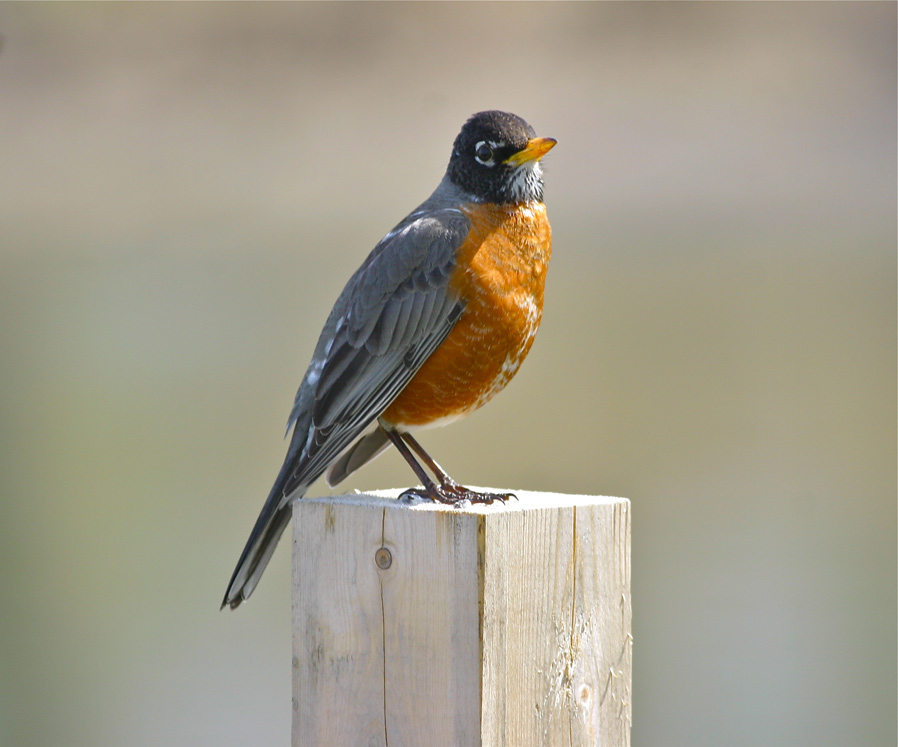A male American robin (Turdus migratorius) — perfection for the ear and eye. © BCP 2010
Have you ever played a mind game with yourself that goes along the lines of, If I could only ever hear one sound again for the rest of my life, what would it be? I have. My contenders include, of course, the voices of my loved ones. But when I play this game with myself, that’s not what I really mean. I mean a particular sound, natural or manmade — it doesn’t matter. It could be the sound of a jet taking off, or the sound of a gentle rain in the forest. Or it could be a bird’s song.
For me, just about the happiest sound in the world is the loud, burbling-brook sound of a common robin. What a happy fellow he seems to be, singing from before dawn, when the streetlights are still on, ’til past dusk, when the streetlights are back on again. Most of my reference books describe the robin’s song as variations of cheerily, cheer up, cheerio, with phrases often repeated. Then there are the robin’s complaining calls, when danger may be afoot, that sound like tut-tut-tut, or hip-hip-hip.
Of course, there are lots of other bird calls that could be on my short list for best ever songs. I’m thinking of the hauntingly beautiful calls of the hermit thrush and the song of the veery, invariably described as ethereal in every guide book I’ve ever read. Any time I hear the songs of either of these singing stars, I am instantly transported up north, with a certain indescribably beautiful lakey smell in the air, and emerald green forests spreading as far as the eye can see in every direction.
Our robins may be as common as mud, but for me they are incomparably beautiful.
© BCP 2010




no comments